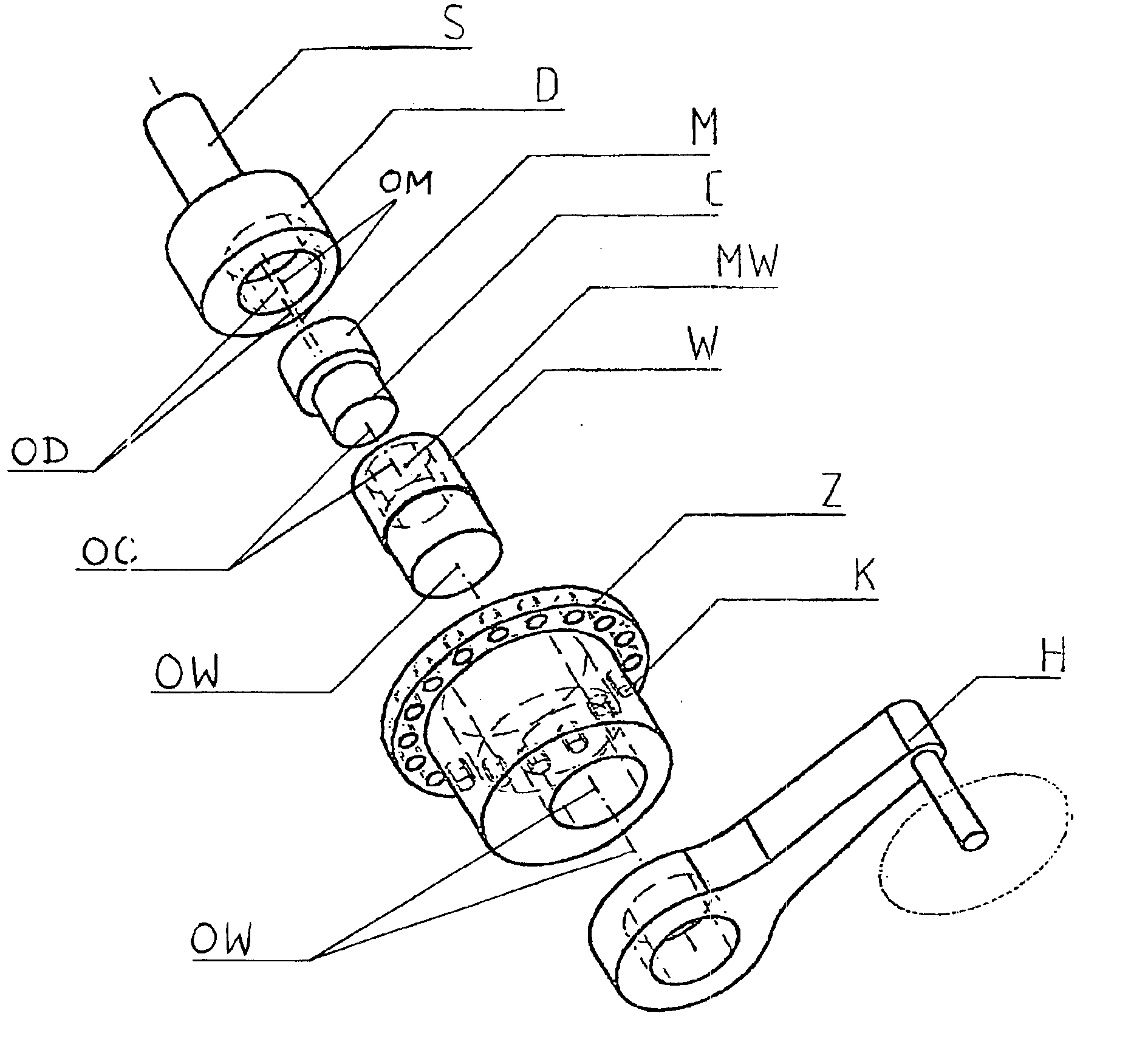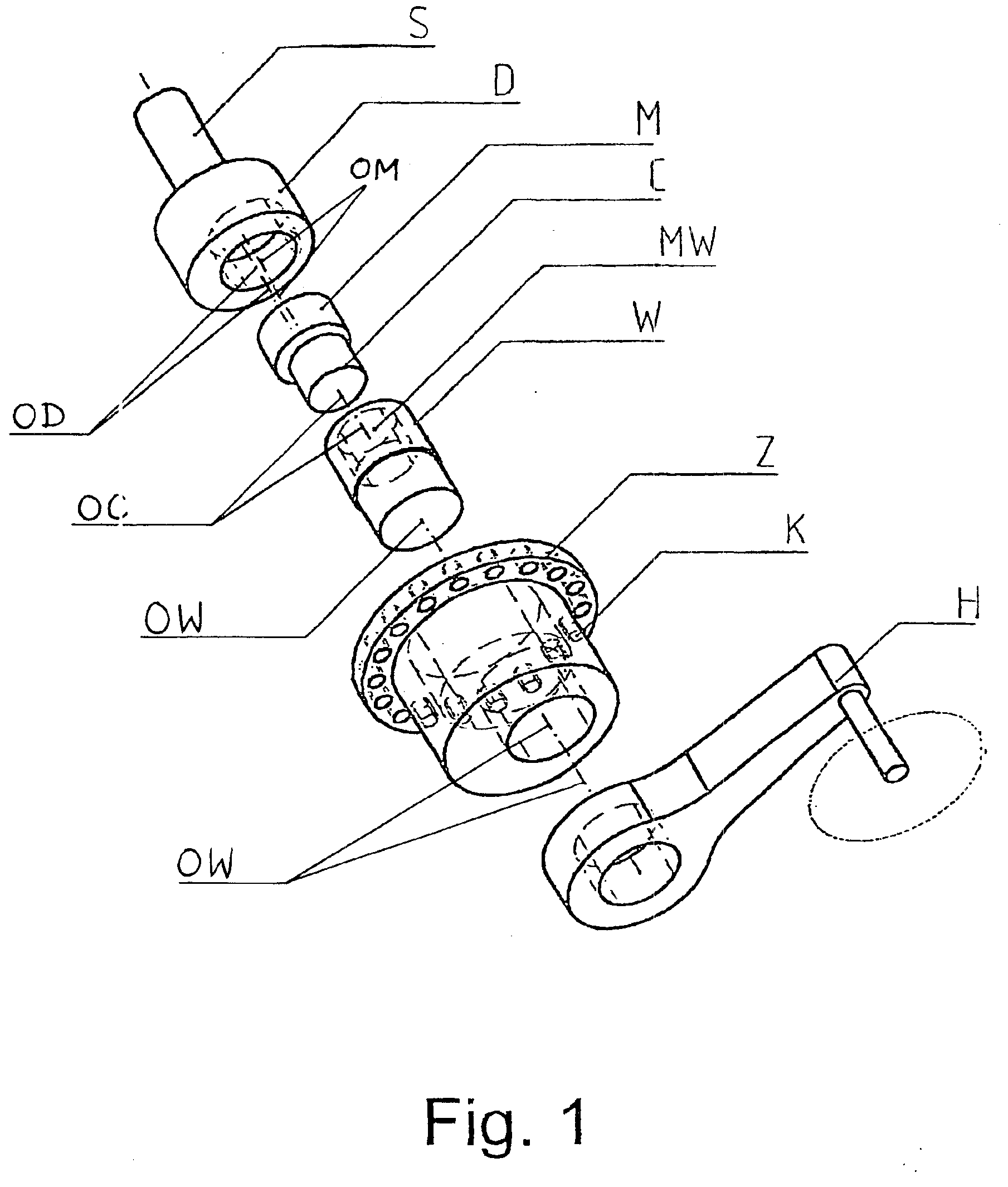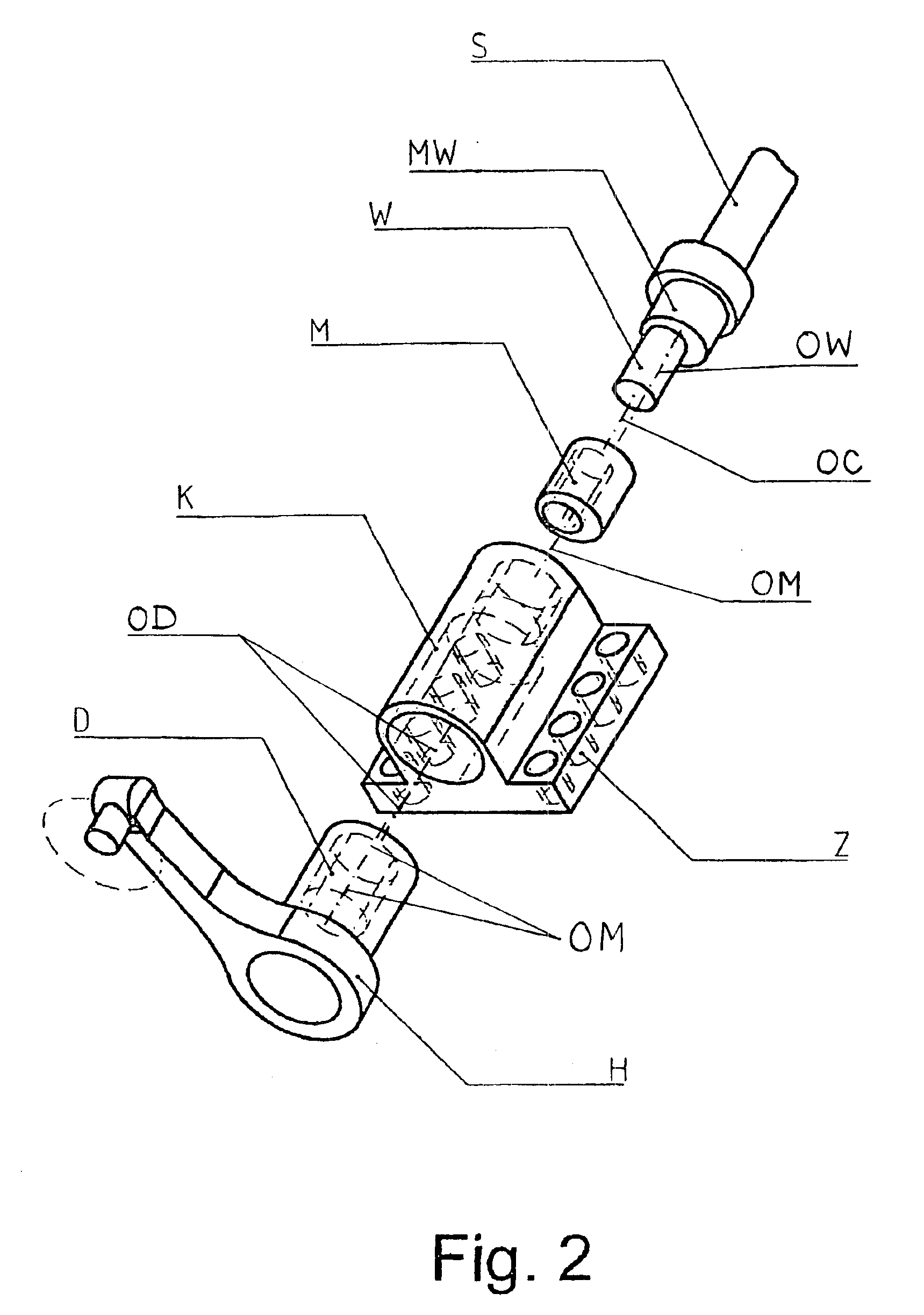Vehicle suspension system, particularly for road and off-road vehicles
a suspension system and vehicle technology, applied in the direction of suspensions, interconnection systems, suspensions, etc., can solve the problems of high price, less durable and reliable than the suspension fitted with steel springs, and substantially inferior suspension damping characteristics to those of pneumatic and hydro-pneumatic suspensions
- Summary
- Abstract
- Description
- Claims
- Application Information
AI Technical Summary
Benefits of technology
Problems solved by technology
Method used
Image
Examples
example 2
Referring to FIGS. 4-6 there is shown another suspension unit fitted with a torsion bar in accordance with the present invention.
The suspension mechanism (FIGS. 5 and 6) comprises a shaft (W) fitted with an eccentric (WM), said eccentric (WM) being pivoted in an eccentric bore chamber (MW) of an intermediate eccentric (M), whereas the eccentric (M) pivots inside of an eccentric bore chamber (DM) in a disc (D). The shaft (W) and the disc (D) pivot directly in a body (K) in their respective circular bore chambers (KW) and (KD).
One end of a torsion bar (S) is coupled rigidly with the shaft (W) and the other end of torsion bar (S) is anchored in a vehicle frame (F). A trailing arm (H) is coupled with the disc (D). The whole suspension unit is fixed to the vehicle frame (F) with the help of a flange (Z) at the body (K).
In this arrangement the axis (OW) of rotation of the shaft (W) relative the body (K) (which overlaps the symmetry axis of the circular bore chamber (KW)), the axis (OD) of...
example 3
Referring to FIGS. 7-9, there is shown a suspension system fitted with a coil spring and a trailing arm in accordance with the present invention.
The suspension mechanism (FIGS. 8 and 9) comprises a shaft (W) fitted with an eccentric (WM), wherein the eccentric (WM) pivots in an eccentric circular bore chamber (MW) in an intermediate eccentric (M), and the intermediate eccentric (M) pivots inside of an eccentric circular bore chamber (DM) in the disc (D). The disc (D) pivots in a circular bore chamber (KD) placed directly in a body (K), and the body (K) is coupled rotationally with the shaft (W) through a circular bore chamber (KW).
An arm (H) is fastened to the intermediate eccentric (M). The body (K) is fitted with a bracket (KS), on which one end of a coil spring (S) is being supported, the other end of which rests on a vehicle frame (F). The whole suspension unit is fastened to the vehicle frame (F) with the help of a flange (Z) at the shaft (W).
In this arrangement the axis (OW) o...
example 4
Referring to FIGS. 10, 11, there is shown a vehicle suspension unit, which is just a variant of the unit shown in FIGS. 7-9, in which the spring is compressed by two different links of the suspension mechanism (through brackets fastened to the suspension mechanism's body and a road wheel arm, which in turn is fastened to the mechanism shaft).
Thus the suspension mechanism (FIG. 11, see also FIGS. 8, 9) comprises a shaft (W) fitted with an eccentric (WM), wherein the eccentric (WM) pivots in an eccentric circular bore chamber (MW) in an intermediate eccentric (M), and the intermediate eccentric (M) pivots inside an eccentric circular bore chamber (DM) in the disc (D). The disc (D) pivots in a circular bore chamber (KD) (FIG. 8) placed directly in a body (K), which in turn is coupled rotationally with the shaft (W) through a circular bore chamber (KW).
A trailing arm (H), fitted with a bracket (HS), is coupled rigidly with the intermediate eccentric (M). The body (K) is fitted with a br...
PUM
 Login to View More
Login to View More Abstract
Description
Claims
Application Information
 Login to View More
Login to View More - R&D
- Intellectual Property
- Life Sciences
- Materials
- Tech Scout
- Unparalleled Data Quality
- Higher Quality Content
- 60% Fewer Hallucinations
Browse by: Latest US Patents, China's latest patents, Technical Efficacy Thesaurus, Application Domain, Technology Topic, Popular Technical Reports.
© 2025 PatSnap. All rights reserved.Legal|Privacy policy|Modern Slavery Act Transparency Statement|Sitemap|About US| Contact US: help@patsnap.com



